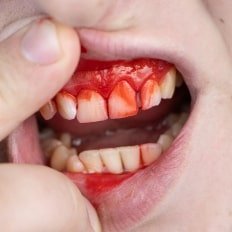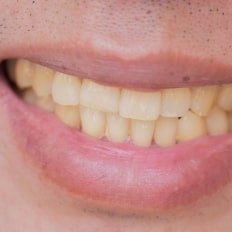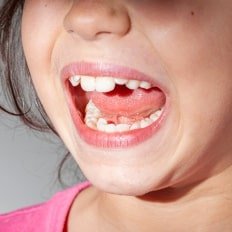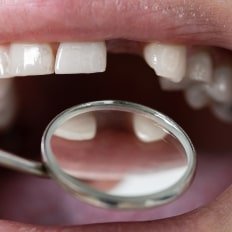7 Dental Problems and Solutions Unveiled: Proven Strategies for a Brighter Smile
A healthy smile is not only aesthetically pleasing but also crucial for overall well-being. Unfortunately, many individuals encounter common dental problems that can affect their oral health and quality of life. In this comprehensive guide, we will address these dental problems and provide effective solutions to help you achieve a healthier, brighter smile. From toothaches to gum disease, we will explore proven techniques and preventive measures for dental problems and their solutions.
Common Dental Problems and Solutions
1. Toothaches and Sensitivity

A toothache can be an agonizing experience, often caused by tooth decay, dental infections, or tooth sensitivity. The sharp pain can disrupt daily activities and make it challenging to enjoy your favorite foods. Sensitivity to hot or cold temperatures can also be an indication of underlying dental issues.
To combat toothaches and sensitivity, several solutions can bring relief. First, maintain good oral hygiene by brushing twice a day with a soft-bristled toothbrush and using toothpaste specifically designed for sensitive teeth. Additionally, consider using a desensitizing toothpaste and a mouthwash that promotes enamel strengthening. If the pain persists, it is essential to visit a dentist for a thorough examination and appropriate treatment.
2. Gum Disease (Gingivitis and Periodontitis)

Gum disease, including gingivitis and periodontitis, is a common dental problem that affects the gums and surrounding tissues. It is caused by plaque buildup, leading to inflammation, bleeding, and potential tooth loss if left untreated. Gingivitis is the early stage of gum disease, while periodontitis is more severe and can cause irreversible damage to the gums and jawbone.
Preventing gum disease involves regular oral hygiene practices, such as proper brushing and flossing techniques. Professional dental cleanings every six months help remove plaque and tartar buildup. In cases of advanced gum disease, periodontal therapy may be required, which includes deep cleaning, scaling, and root planing. Seeking timely treatment and maintaining good oral hygiene are crucial to combat gum disease and preserve gum health.
3. Tooth Decay (Cavities)

Tooth decay, commonly known as cavities, is one of the most prevalent dental problems worldwide. It occurs when bacteria in the mouth produce acids that erode the tooth enamel, leading to the formation of small holes or cavities. If left untreated, tooth decay can progress, causing pain, infection, and the need for extensive dental work.
Preventing tooth decay involves a combination of good oral hygiene practices and a balanced diet. Brushing with fluoride toothpaste, flossing daily, and limiting sugary foods and drinks are essential for cavity prevention. Regular dental check-ups allow early detection and treatment of cavities. If a cavity does develop, the dentist will recommend appropriate treatment, such as dental fillings, to restore the tooth's structure and prevent further decay.
4. Bad Breath (Halitosis)

Bad breath, medically known as halitosis, can be embarrassing and a source of social discomfort. It can result from poor oral hygiene, certain foods, underlying dental conditions, or even systemic health issues. Halitosis often stems from bacterial activity in the mouth, which produces foul-smelling sulfur compounds.
To combat bad breath, maintain excellent oral hygiene. Brush your teeth and tongue regularly, use antibacterial mouthwash, and floss daily to remove food particles and plaque. Staying hydrated andconsuming a balanced diet can also help prevent bad breath. If the issue persists despite proper oral hygiene practices, it is advisable to consult a dentist. They can identify any underlying dental conditions contributing to halitosis and provide appropriate treatment.
Cosmetic Dental Issues
1. Teeth Discoloration and Stains

Teeth discoloration and stains can diminish the brightness of your smile. Various factors contribute to discoloration, including consumption of staining beverages like coffee or tea, tobacco use, aging, and certain medications. Fortunately, several options can help restore the natural whiteness of your teeth.
Professional teeth whitening is a popular and effective solution. It involves the application of bleaching agents to lighten the tooth enamel. Dentists offer in-office whitening treatments, which provide quick and noticeable results. Alternatively, at-home whitening kits prescribed by dentists can be used at your convenience. It's important to follow the instructions carefully to achieve optimal results without damaging your teeth.
2. Misaligned Teeth

Misaligned teeth, also known as malocclusion, can affect both your smile's aesthetics and oral function. Malocclusion may cause difficulties in chewing, speech issues, and even jaw pain. Orthodontic treatments are commonly employed to address misalignment and improve the overall alignment of the teeth.
Braces are a traditional and effective method of correcting misaligned teeth. They consist of brackets and wires that gradually shift the teeth into proper alignment over time. Clear aligners, such as Invisalign, provide a more discreet alternative. These removable aligners are custom-made and practically invisible, making them a popular choice for adults and teenagers. Retainers are often used post-treatment to maintain the corrected alignment of the teeth.
3. Missing Teeth

Tooth loss can occur due to various reasons, including decay, gum disease, or trauma. Missing teeth not only impact your smile but can also lead to oral health complications and affect proper jaw alignment. Fortunately, there are multiple dental solutions available to replace missing teeth and restore functionality.
Dental implants are a reliable and long-lasting option for replacing missing teeth. They consist of artificial tooth roots surgically placed into the jawbone, providing a sturdy foundation for the replacement tooth. Dental bridges, which consist of artificial teeth supported by adjacent natural teeth, can also replace missing teeth. For individuals missing multiple teeth, dentures offer a removable option to restore dental aesthetics and functionality.
Preventive Measures
1. Importance of Regular Dental Check-ups and Cleanings
Regular dental check-ups and cleanings play a vital role in maintaining optimal oral health. Dentists can detect early signs of dental problems, such as cavities or gum disease, before they worsen. Additionally, professional dental cleanings remove plaque and tartar buildup, which cannot be completely eliminated through regular brushing and flossing alone.
It is recommended to visit the dentist every six months for check-ups and cleanings, although the frequency may vary based on individual needs. Regular dental visits allow for preventive care, timely treatment, and guidance on maintaining good oral hygiene practices.
2. Proper Brushing and Flossing Techniques
Proper brushing and flossing techniques are fundamental for maintaining healthy teeth and gums. Brushing twice a day with a soft-bristled toothbrush and fluoride toothpaste helps remove plaque and food particles from the teeth's surfaces.
When brushing, use gentle, circular motions and pay attention to all areas of the mouth, including the gumline. Be sure to replace your toothbrush every three to four months or sooner if the bristles become frayed.
Flossing is equally important to remove plaque and debris from between the teeth and along the gumline. Use a gentle back-and-forth motion, making sure to reach the sides of each tooth. If desired, consider incorporating water flossers or interdental brushes for added convenience and effectiveness.
3. Healthy Dietary Choices for Optimal Dental Health
Maintaining a balanced diet is not only beneficial for overall health but also plays a significant role in dental health. Limiting the consumption of sugary and acidic foods and beverages can help prevent tooth decay and enamel erosion.
Opt for nutrient-rich foods like fruits, vegetables, lean proteins, and dairy products that support healthy teeth and gums. Incorporate foods high in calcium, such as milk, cheese, and yogurt, as calcium strengthens tooth enamel. Drinking plenty of water also helps maintain oral hygiene by washing away food particles and promoting saliva production, which has natural antibacterial properties.
4. Benefits of Fluoride and Dental Sealants
Fluoride is a mineral that helps strengthen tooth enamel and makes it more resistant to acid attacks. It can be found in fluoridated water, toothpaste, mouthwash, and professional fluoride treatments provided by dentists. Using fluoride products as part of your oral care routine can help prevent tooth decay and protect the overall health of your teeth.
Dental sealants are another preventive measure, particularly for children and teenagers. Sealants are thin, protective coatings applied to the chewing surfaces of the back teeth (molars and premolars). They act as a barrier against bacteria and food particles, reducing the risk of cavities in these vulnerable areas.
Conclusion
Maintaining good oral health is crucial for a beautiful smile and overall well-being. By addressing common dental problems and implementing effective solutions, you can achieve a healthier mouth and a brighter smile. Remember to practice proper oral hygiene, seek professional dental care, and embrace preventive measures to preserve your dental health for years to come. By taking these steps, you can ensure a lifetime of confident smiles and optimal oral health.
